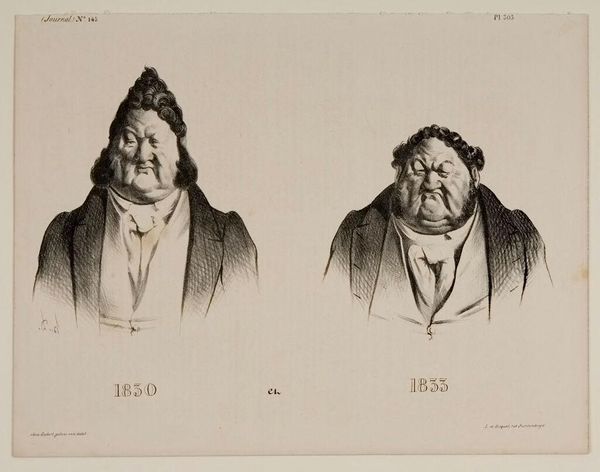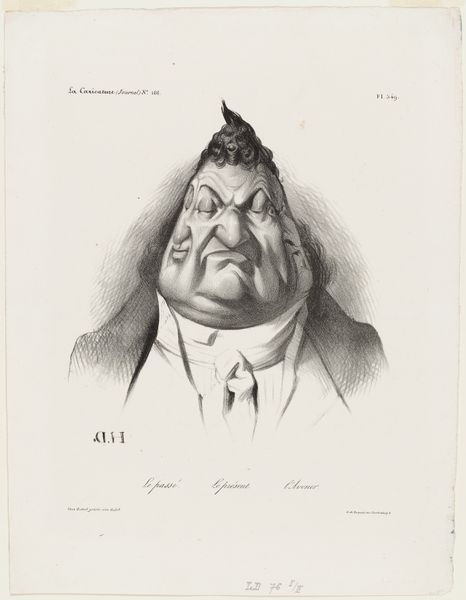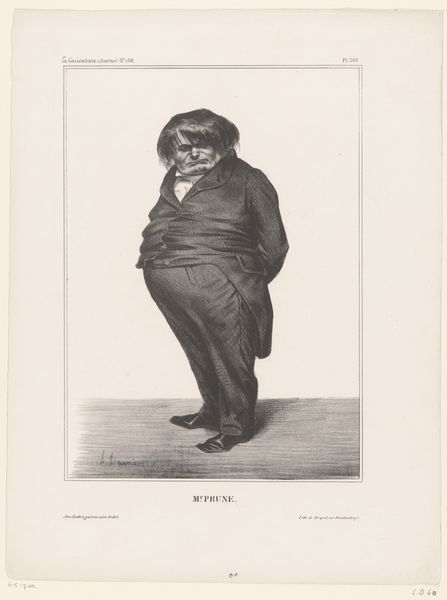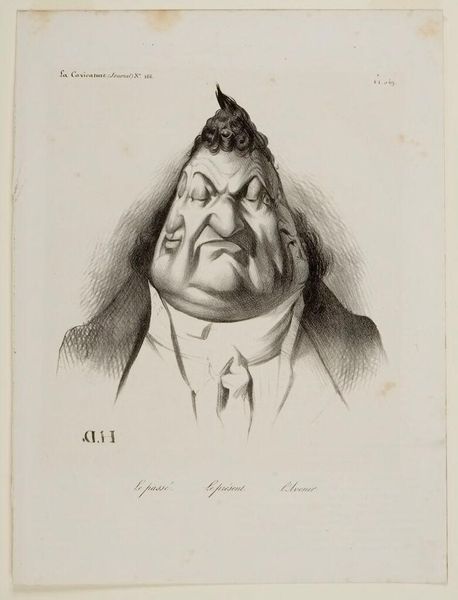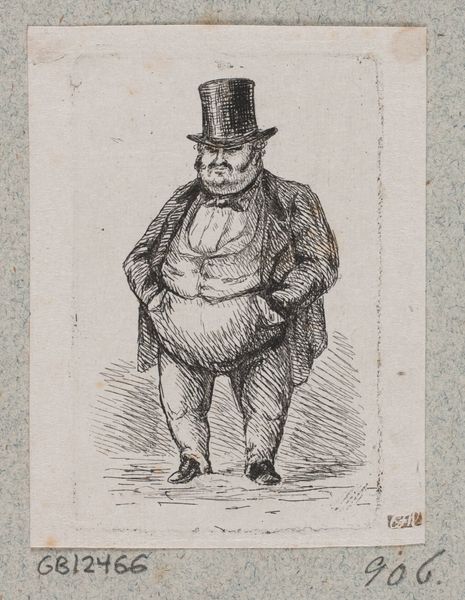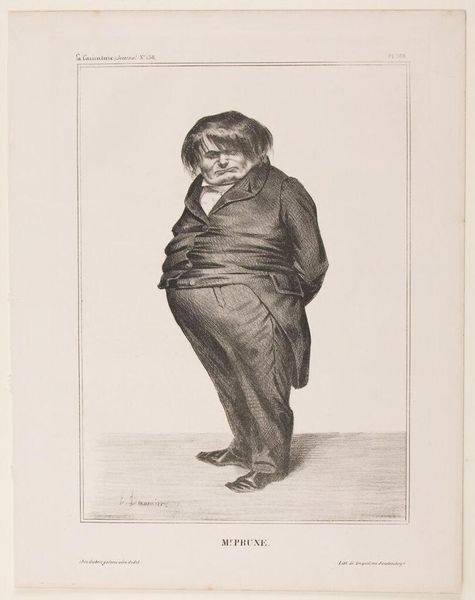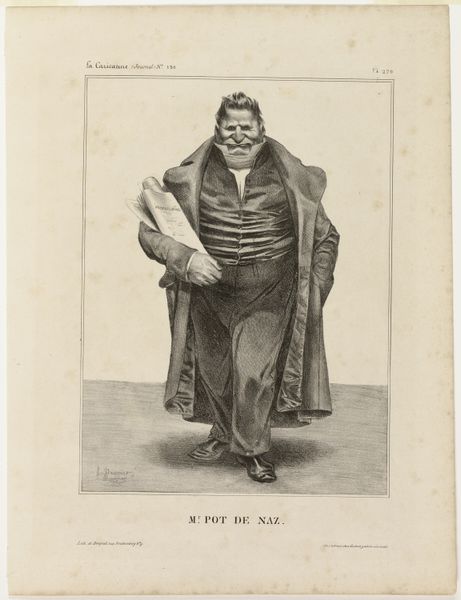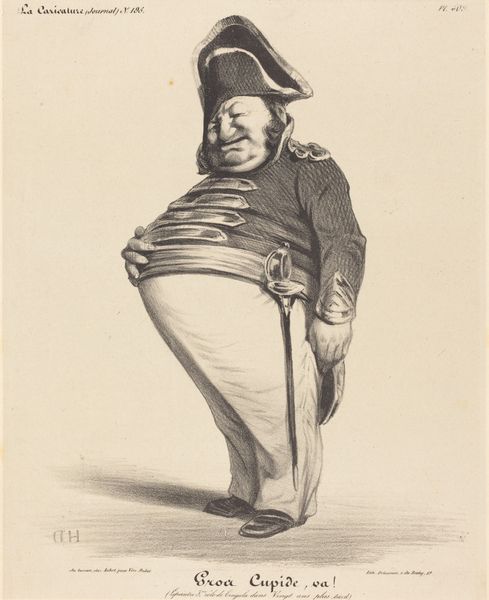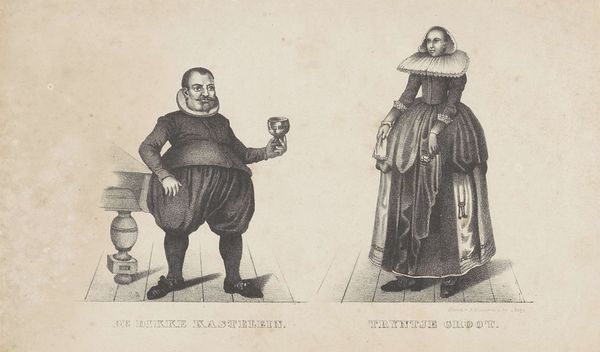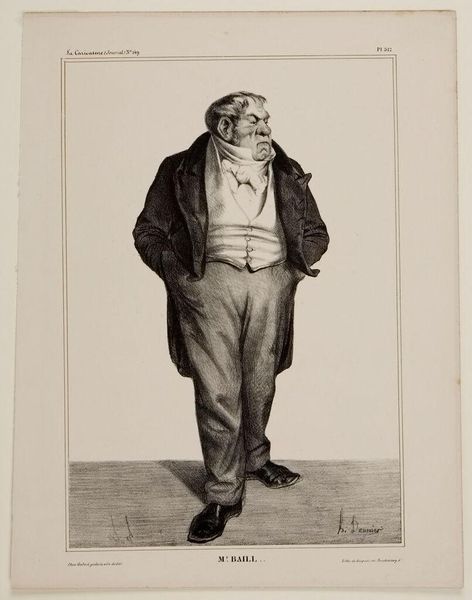
Karikatuur van koning Lodewijk Filips I van Frankrijk in 1830 en 1833 1833
0:00
0:00
drawing, lithograph, graphite
#
portrait
#
pencil drawn
#
drawing
#
16_19th-century
#
lithograph
#
caricature
#
pencil sketch
#
romanticism
#
graphite
#
history-painting
#
realism
Dimensions: height 268 mm, width 354 mm
Copyright: Rijks Museum: Open Domain
This caricature of King Louis-Philippe I of France was made by Honoré Daumier between 1830 and 1833, using lithography. The image is printed from a stone matrix, which is a relatively quick and reproducible process. The first image shows Louis-Philippe in 1830, when he first took the throne. His head is shaped like a pear, a not-so-subtle dig at his naive and foolish nature. By 1833, when the second image was made, the pear has become rotten and grotesque. Daumier was a master of lithography, using the medium to satirize the French monarchy and bourgeois society. He used this printmaking technique to create art that was accessible to a wide audience, and was often critical of the ruling class. By focusing on materials and the means of production, we can see how Daumier challenged the status quo, using his skills as an artist to create powerful and provocative images that spoke to the social and political issues of his time.
Comments
No comments
Be the first to comment and join the conversation on the ultimate creative platform.
